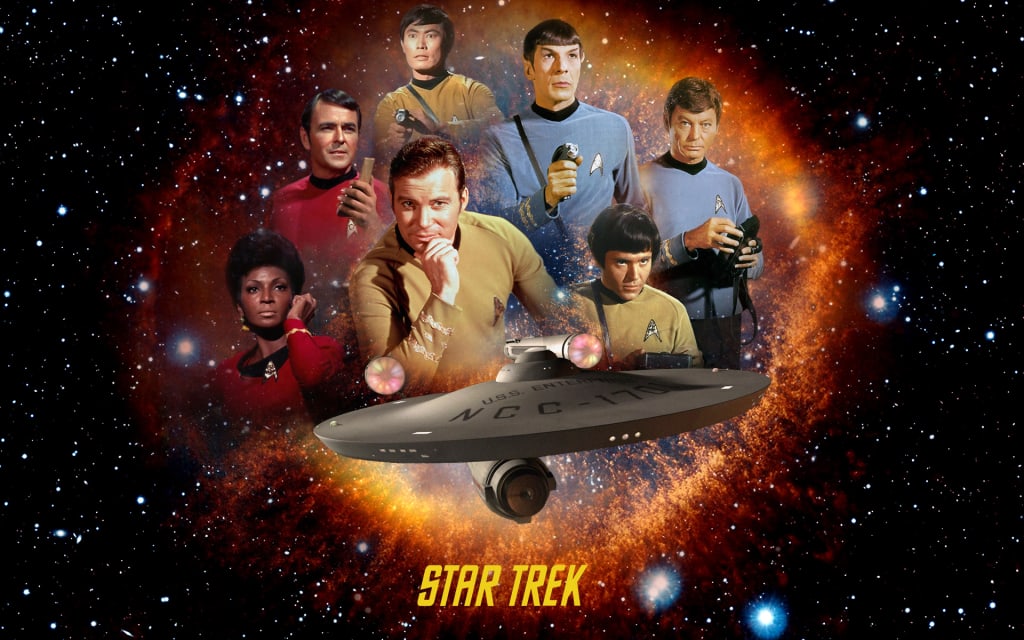The Origins of Mary Sue
From Star Trek Parody to the Mainstream

When it comes to critiques of female characters in media, one word we’ve all seen thrown around is Mary Sue. It’s a simple phrase that refers to a perfect, well liked, and often almost completely flawless character, who can be seen as unrealistic and one dimensional. But this phrase wasn’t always as mainstream as it is today. The concept of Mary Sues stemmed from the community built world of fandom. More specifically, it came from the niche little world of parody.
The name stems from one particular character, created by Star Trek fan Paula Smith, in her short story ‘A Trekkie’s Tale’, published in 1973. This was long before the days of the multi-fandom fan fiction websites that we know today, so the story was published in the Star Trek fanzine, Menagerie. Below is a short extract from the beginning of the story:
"Gee, golly, gosh, gloriosky," thought Mary Sue as she stepped on the bridge of the Enterprise. "Here I am, the youngest lieutenant in the fleet—only fifteen and a half years old." Captain Kirk came up to her. "Oh, Lieutenant, I love you madly. Will you come to bed with me?"
"Captain! I am not that kind of girl!"
"You're right, and I respect you for it. Here, take over the ship for a minute while I go get some coffee for us."
Mr. Spock came onto the bridge. "What are you doing in the command seat, Lieutenant?"
"The Captain told me to."
"Flawlessly logical. I admire your mind."
This story had all the hallmarks of the well known modern Mary Sue. Unusually skilled, instantly loved, and written completely without out flaws. It’s also worth noting that ‘A Trekkie’s Tale’ ends with Mary Sue’s noble death, a tragedy mourned by the entire Enterprise. This too would become a trait associated with this trope.
Of course, we were never supposed to take the tragic end of Mary Sue seriously. ‘A Trekkie’s Tale’ was a parody that put a name to a pre-existing trope within the fan fiction writing community. Idealistic, often self interest type characters were already a staple in the world of fandom, likely due the writers’ lack of experience and often young age. The trope was never meant to be exclusively focused on women. Anyone could fall victim to the Mary Sue treatment, with the phrase Gary Stu or Marty Stu being given to describe male variations. However, because the fanbase for ‘Star Trek: The Original Series’ consisted largely of women, most Mary Sue like characters also ended up being women.
So, how did this fan fiction phrase, which started life within one fandom, make its way to the mainstream? Well, I’m afraid this section is mostly speculation, but I personally believe it comes from the growing popularity of fan fiction and the spread of fan fiction writers entering the professional world.
When the concept of fandom began to take off, the rules around fan fiction and copyright were yet to be established. Nobody was quite sure what they could get away with and it was more than possible for writers to get themselves into serious legal trouble for the publication of their fanworks. This coupled the lack of any centralised hub to share fanworks meant that fan fiction writing was an underground, secretive hobby, reserved only for a few niche mailing lists and fan circles. As a result, the language of fandom, stayed in fandom.
However, while the legality of fan fiction is still technically considered a grey area, industry professionals tend to be more accepting of the concept, recognising an active fanbase as a positive sign for their creations. Along with this, fan fiction is no longer confined to fanzine. The internet has given rise to a whole host of websites for fans to share their work. One of the most well known of these is Archive of Our Own (often shortened to AO3), which offers legal protection to those who post there.
In addition to this, there’s been a rise in published writers, critics, and industry professionals who have proudly and openly admitted to writing fan fiction in the past. These professionals include Cassandra Clare (author of the bestselling The Mortal Instruments series), video essayist and Hugo aware nominee Lindsay Ellis, and 50 Shades of Grey author E.L. James, who famously adapted her Twilight fan fiction ‘Masters of The Universe’ into her well known erotic trilogy. Well, this has not entirely legitimatised the creative hobby in the eyes of the general public, it has certainly brought more attention to.
So, here in the 21st century, fandom and fan fiction is far from secret. In fact, it’s more mainstream than ever, with it gaining the support of American God’s author Neil Gaiman and popular fanworks such as Anna Todd’s ‘After’ series being adapted into original books and films. And now that fandom is no longer so hidden, neither is its language. As a result, phrases such as ‘self-insert’, ‘ship’, and our beloved ‘Mary Sue’ have made it into mainstream vocabulary, even being used to describe things outside of fan fiction.
In conclusion, Mary Sue’s journey from fandom joke to well known criticism as been a long one, that has travelled alongside fandom’s trip out of the shadows towards the public eye. So, next time you see a character being dismissed as Mary Sue, spare a thought to the youngest lieutenant in the fleet and all the eager young writers who helped bring her to life.
If you enjoyed this article, consider leaving a tip. Your donations help me continue writing.






Comments
There are no comments for this story
Be the first to respond and start the conversation.